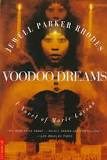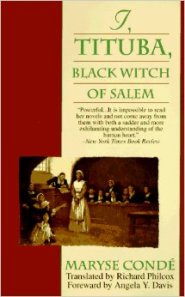Note from Kaia:
This week we are honored to have our very first guest blogger on Aren’t I A Heroine. This article is the result of contemporary romance author Shelly Ellis tweeting that she didn’t have anything to do. I responded by challenging her to tie her contemporary novels to something historical. I didn’t think Shelly would take me up on it, but she did. Now, I want her to write a novel about Althea Gibbons’s backstory AND about Lady Sara. Who knew?
The Great Migration & Contemporary African-American Historical Romance
by Shelly Ellis

Photo Credit by Joe Yablonsky
I love romance novels. I particularly love book series that are rooted in a family saga or history. When I wrote my Gibbons Gold Diggers series, I didn’t just want to write salacious stories about ruthless gold diggers/seducers. That would be the easy part.
To give another layer to the series, I wanted to focus on a family, particularly a family of women with their own sense of tradition/legacy. From the outside their traditions seem a bit warped, to say the least, but these traditions are what hold their family together. I also wanted to borrow from my family history by basing the series loosely on the legacy of Great Migration that took blacks from the South to the North. More than 6 million blacks between the 1880s and the 1930s left the South in droves during post-Reconstruction to seek more economic and social opportunities in the Northeast, Midwest, and waaay out West that Segregation had thwarted them in the South. A second wave – or the second Great Migration of blacks – headed north after the Great Depression during 1940 to 1970. (My family took part in both waves.) They traveled to great metropolises like New York City, Philadelphia, Chicago, Detroit, Cleveland, Los Angeles, Oakland, and in my great-grandparents’ case, even Washington D.C., joining thriving black communities and expanding into new suburbs.
The matriarch of the Gibbons family in my book series – Althea Gibbons – is no different from these many other black migrants. But instead of leaving behind her sharecropper shack in North Carolina to seek a job as maid, clerk, or hairdresser above the Mason-Dixon Line, Althea decides to find a rich man and marry him. She uses her wit, looks, and her wiles to go from the daughter of a poor sharecropper to the wife of several millionaires.
 After I finished the novel, I stumbled upon another industrious black woman who used her beauty and her brains to help climb the socioeconomic ladder. Sara Lou Harris, one of the first black runway models, was born in 1926 in North Carolina to humble beginnings, much like Althea Gibbons. The daughter of a mill worker and house painter, Sara would later go on to graduate from Bennett College and Columbia University. She became the first black woman to be featured in the New York buyers’ fashion show, the first in a Lucky Strikes cigarette ad campaign, and she was featured on the cover of magazines like Jet and Ebony. She later married John Carter, a prominent barrister in British Guiana (now Guyana) who was knighted by Queen Elizabeth, therefore making Sara Lou Harris, Lady Sara. Who knew a simple girl from North Carolina would earn such a title?
After I finished the novel, I stumbled upon another industrious black woman who used her beauty and her brains to help climb the socioeconomic ladder. Sara Lou Harris, one of the first black runway models, was born in 1926 in North Carolina to humble beginnings, much like Althea Gibbons. The daughter of a mill worker and house painter, Sara would later go on to graduate from Bennett College and Columbia University. She became the first black woman to be featured in the New York buyers’ fashion show, the first in a Lucky Strikes cigarette ad campaign, and she was featured on the cover of magazines like Jet and Ebony. She later married John Carter, a prominent barrister in British Guiana (now Guyana) who was knighted by Queen Elizabeth, therefore making Sara Lou Harris, Lady Sara. Who knew a simple girl from North Carolina would earn such a title?
Althea Gibbons doesn’t get any royal titles from her marriages (I wish I would have thought of that!), but she acquires plenty of wealth and teaches her daughter Yolanda how to do the same. Yolanda then teaches these gold-digging lessons to her four daughters – Cynthia, Dawn, Stephanie, and Lauren – the stars of the Gibbons Gold Digger series. The family even develops an unwritten gold-digging rule book that all of them must follow. The sisters quote from the rule book liberally. (A rule that is the theme of each respective novel is featured at the beginning of the first chapter of each book.)
To continue with the “legacy” idea, I have Althea carrying on a tradition she had witnessed in the South where the wealthy landowners would host their children and grandchildren for brunch and tea on Saturdays. (This tradition is fictitious but again, I wanted to add another layer to the story.) The Gibbons family adopts this tradition and it becomes “Saturday brunch at Mama’s” where they connect as a family and discuss their gold-digging exploits. These scenes are where readers get to see the most interaction between the Gibbons characters.
Contemporary genre fiction can be spicy, entertaining, and sexy, but you can also add some depth by grounding it in history and specifically, African American legacy. I hope to do this again in the next series I’m working on now that I’m finishing up the fourth book in the Gibbons Gold Digger series. It will be exciting to see what traditions I can think of next.
Shelly Ellis
As long as she could remember, Shelly Ellis (who also writes under the name, L.S. Childers) has wanted to be a writer. In college, she studied journalism and started out as a crime reporter for a small local newspaper. Now she is an editor at a trade journal in Virginia.
Her fiction writing career began when she became one of four finalists in the BET Books First-Time Writers Contest when she was 19 years old. The prize was having her first short-story romance published in the book, All That and Then Some! She has since been chosen as a finalist for 2012 African American Literary Award in the romance category. Her first novel, The Right Maneuver, debuted in April 2011 and her second, A Love Built to Last, was released in November 2011 and nominated for the African American Literary Award in the romance category. Shelly started her new women’s fiction series with Kensington Publishing, the Gibbons Gold diggers in May 2013, with Can’t Stand the Heat.
She is married and lives in Prince George’s County, Maryland with her husband, their daughter, and their tabbie cat, Barty. She loves to paint, read, and watch movies. Her Twitter: @ellisromance. Her website: http://shellyellisbooks.com/












